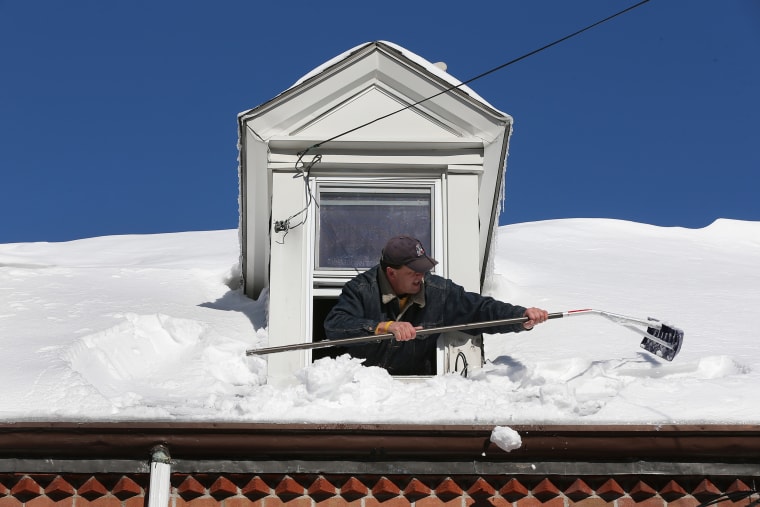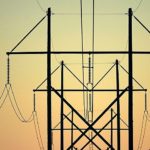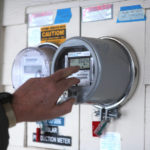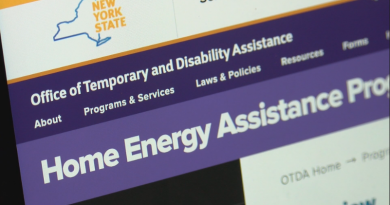As home energy prices near 10-year highs, a utility crisis looms – NBC News
Energy Disrupter
Utility companies are raising rates across the country, sending consumers and the assistance programs many rely on racing to prepare for a costly winter. Residents are taking on debt to cover their bills, protesting at civic forums and flooding relief organizations with aid applications. Advocacy groups are blaring out energy conservation tips, appealing to donors and even challenging rate hikes in court.
The months ahead will determine how far such efforts can go in helping customers like Barbara Brickey and Randy Parks make it through the winter. The couple live on a fixed income of $2,100 a month in rural Elk Creek, Virginia, which they say is prone to power outages.
Parks, 64, uses an oxygen concentrator to manage his stage-four chronic obstructive pulmonary disease, so it usually takes at least $400 a year to feed their generator when the electricity cuts out. They heat their home mainly with fuel oil, which costs them $4.57 a gallon, up from around $3.10 last year. A winter’s worth is typically $1,500 to $1,800, but, Brickey said, “I don’t know what it’ll be this year with the prices going up so high.”

Nearly half of U.S. households use natural gas to heat their homes, and they will spend 28% more to do so this winter, the U.S. Energy Information Administration projected Wednesday. Those who use heating oil, like Brickey, will spend 27% more — barring a colder forecast — and homes that primarily use electricity and propane will pay 10% and 5% more, respectively.
As Brickey, 66, has peppered the house with electric heaters to combat the early frost, her electric bill — paid to Appalachian Power, which is adding an estimated $20 to customers’ bills starting in November — has risen from $175 to $200 a month during the summer to around $250.
A representative for Appalachian Power said the monthly bill for the average residential customer in Virginia using 1,000 kilowatt-hours will go from $123.33 to about $157 by the end of the year. About 60% of the regional hike is related to higher fuel costs, the representative said.
While the prevalence of different heating sources varies across the U.S. — natural gas is the most common and generally the cheapest — customers’ bills are rising in many places.
Georgia Power is seeking permission to increase electricity rates a total of 12% over the next three years. Dominion Energy, which operates in several states, applied for a 14% rate hike for South Carolina consumers that could take effect as early as next month. Duke Energy customers in Indiana were recently hit with a 7% hike after a temporary 16% increase just this summer. Nationwide, investor-owned utilities have requested rate increases amounting to nearly $12 billion from the beginning of the year through the end of August, according to S&P Global.
Most utility companies point out that they don’t profit directly from selling energy itself, and many cite the same factors in seeking rate hikes: revenue lost during the pandemic, inflation’s bloating the cost of materials and infrastructure, and the conflict in Ukraine’s squeezing global energy markets. Just last week, the OPEC+ alliance slashed oil production by 2 million barrels a day, contributing to the new upswing in fuel prices.
“In the winter, we really do expect to see devastatingly high energy prices in much of the world, or supply crunch at the very least,” said Ryan Kronk, a power market analyst at Rystad Energy, a data-intelligence firm focused on the global energy market. As a result, leaders of assistance programs and advocacy groups are sounding alarms and preparing for what such a crunch could mean for consumers already grappling with high inflation.
About 17% of U.S. households have either missed a utility bill or paid it late, a Bank of America/CivicScience survey found last month. The share jumped to 25% among households earning less than $50,000 a year. And according to the National Energy Assistance Directors Association, which represents state directors of the Low Income Home Energy Assistance Program, known as LIHEAP, the bottom 20% of U.S. earners are already set to spend more than 23% of their incomes on this year’s energy bills — up from 21% in 2020. Overall, the energy directors group forecasts home heating costs will reach a 10-year high this winter.
Many LIHEAP administrators say the federal program doesn’t have the funding to meet the deluge of applications it expects. Congress recently allocated an additional $1 billion to fund LIHEAP through 2023, but the National Energy Assistance Directors Association had asked for $5 billion more to offset rising energy costs.
“It’s not enough to meet this vital need that’s going up in price,” said Mark Wolfe, the group’s executive director. “Lower-income families are getting squeezed. They don’t have any discretionary income left.”
That is the case for residents like Brickey, who said she owes $4,000 in credit card debt, almost exclusively because of energy costs. Fuel oil customers often must pay for deliveries up front, and many suppliers have been less willing to offer payment plans because of market volatility, experts said.
“I’ve always put our oil bill and our gas bill on the credit card, because I never, ever have enough money to pay it,” she said. “I don’t have savings, period.”
Brickey and Parks applied for LIHEAP assistance through District Three, a government cooperative geared toward senior citizens in southwest Virginia. They had three months of electricity paid for this past summer, along with $800 worth of fuel oil assistance last winter. Brickey expects to qualify for similar aid in the coming months.

Some relief agencies echo Wolfe’s concerns about how far LIHEAP funding will go. Mary Knittle, the director of energy resources at the Worcester Community Action Council in Worcester, Massachusetts, said the organization’s first-time LIHEAP applicants tripled in volume from this time last year. The group is starting its fiscal year with around $10 million, less than half its $24 million in the previous period, because federal pandemic aid ran out.
“It’s like we just walked off a cliff,” she said. “All that money’s gone.”
Knittle said her group, which serves 45 communities in central Massachusetts, has started petitioning legislators, reaching out to donors earlier than usual and asking for larger contributions. She also instituted weekly trainings this summer for new staffers to help meet growing demand, she said, and ramped up social media messaging around ways to save on bills.
At least one advocacy group is challenging utilities’ efforts to raise rates in the first place. The Sierra Club is suing utility companies in at least nine states to block or limit proposed rate increases. The environmental group argues that consumers would be less vulnerable to volatile fuel prices if utilities moved further away from natural gas and coal and invested more in renewables.
In Georgia, the Sierra Club is working with a local environmental nonprofit to help Georgia Power consumers file paperwork to voice their concerns at Public Service Commission hearings in Atlanta. One of them is Eugene Vickerson, 75, who said he was so exasperated with Georgia Power that he drove over two hours last month for just three minutes of time to protest on behalf of other “grandparents raising grandchildren.”
“I’m almost insulted by being here, coming here to beg for you to not raise these rates,” he said at the hearing, emphasizing the financial pressures on his rural neighbors, many of them poor. “Every time I look around, there’s another request for some rate increase,” he said, adding, “It seems like there’s a lack of empathy.”
Charline Whyte, a senior representative for the Sierra Club’s Beyond Coal campaign, said Georgia Power “can afford to lose some profits to protect the customers from the heavy impacts that come along with a lot of the power bills.” The Sierra Club is also organizing protests against Dominion’s proposed rate hikes in South Carolina.
Georgia Power said its rate increase would fund three priorities: strengthening the electric grid, making the transition to renewables and improving customer experience. It also pointed to financial aid programs, including discounts for eligible seniors and subsidies for home retrofits to boost energy efficiency.
“Most people are burned out, don’t want to fight, can’t take off from work” to advocate for relief, Vickerson said in an interview last week, sounding pessimistic about thwarting the proposed rate hike, which is scheduled to be decided in December. “These increases don’t seem to stop.”
Original Source: https://www.nbcnews.com/business/energy/home-energy-prices-10-year-highs-heating-utility-bills-inflation-rcna50911
















